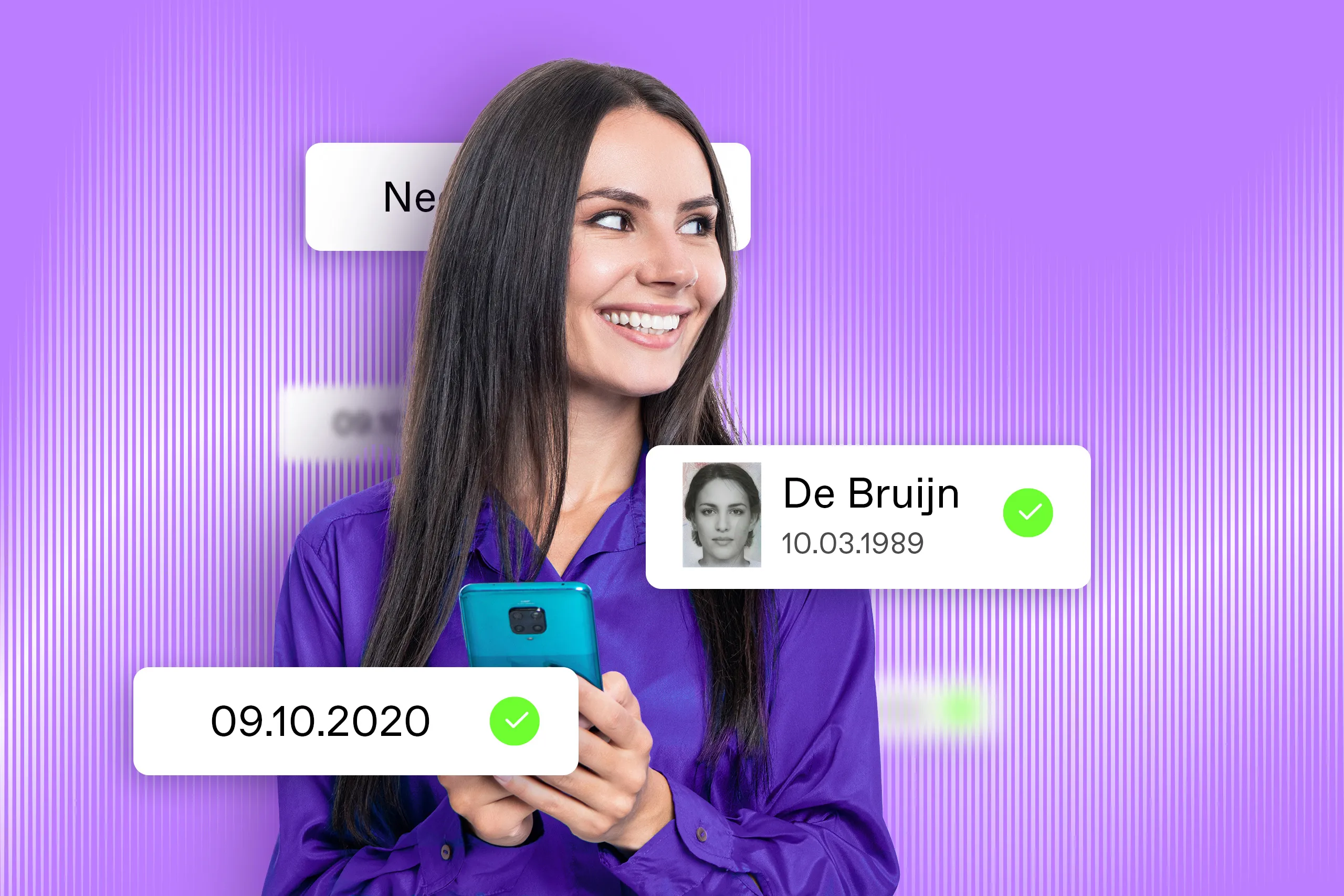The importance of knowing your patient (KYP) can sometimes feel understated when compared to KYC in banking or gambling. However, errors in patient identification can, nonetheless, lead to dire consequences: one study reported that a hospital in Texas had 22% of its patient records duplicated, and in 4% of cases involving duplicate records, clinical care was affected.
That’s why advanced healthcare identity verification is getting adopted more and more often. It protects patients from being mistreated, protects institutions from monetary and reputational damage, and boosts their operational efficiency as well.
What exactly is being implemented right now?
In this article, we will examine the current state of KYP verification worldwide, and answer this question—and more.
Subscribe to receive a bi-weekly blog digest from Regula
What is Know Your Patient?
Know Your Patient (KYP) is an identity verification process in healthcare that ensures patients are who they claim to be. In terms of methods used, health systems increasingly employ a blend of document checks, biometric verification methods, and database look-ups to achieve their goal.
KYP is closely related to Know Your Customer (KYC) in finance, but it addresses healthcare-specific risks like medical identity theft, wrong-patient errors, and prescription fraud. The procedure matters greatly for routine registration, patient onboarding to digital portals, pharmacy dispensing, telehealth prescribing, and even cross-institution exchange. At each of those moments, strong KYP verification is the difference between safe care and avoidable harm.
Some practical benefits of Know Your Patient include:
Patient safety gains: Arguably the main benefit, as highlighted by WHO’s 2024 report, placing patient identification among foundational safety actions. Reliable KYP verification reduces misfiled results and medication mix-ups, plus protects patients during high-risk procedures such as transfusions or anesthesia checks.
Fraud reduction: The KYP process also greatly improves the healthcare system’s defences against impersonations; for example, Vietnam’s e-prescription project is seen as a major step forward in combating wrongly dispensed medication.
Cleaner digital access and fewer account mix-ups: With the spread of KYP verification we’re also seeing developments in their methodology that provide a whole new set of benefits. New frameworks like NHS England’s identity standard give product teams a clear rulebook for KYP compliance in patient-facing apps, account recovery, and proxy flows. In turn, this reduces wrong-account linkages that otherwise lead to identity fraud or privacy incidents.
A word of caution
At the same time, healthcare providers must be very careful about patient data, as KYP compliance regulations are some of the strictest in the world. Vast amounts of personal data are being collected and stored for verification purposes, and any breach leads to huge losses across the field. For example, the 2023 breach of HCA Healthcare saw 27 million data rows put up for sale by hackers. The data reportedly included patients’ personal information and certain visit records, with the leak affecting patients in nearly two dozen US states.
How does the KYP process work?
The KYP process is a repeatable and auditable set of checks, as opposed to a one-time measure. That is because the vulnerability of the system can be tested by fraudsters at any touchpoint, be it a clinician updating a record or writing a prescription for someone.
Let’s break this process down and see what steps are involved:

Step 1: Identity proofing at enrollment
Patients present a government credential (passport, national ID, driver’s license, or health card) along with their legal name, date of birth, address, and a social security number where necessary. The staff verify the document, extract data from it, and check the ID photo against the patient’s face.
Institutions increasingly use automated solutions like Regula Document Reader SDK and Regula Face SDK to perform ID scans and facial recognition, respectively. These not only increase the accuracy and the efficiency of the process, but also facilitate later checks against known-fraud lists or registries, as they can safely store the captured data on-premises.
Alternatively, where national eID or wallet schemes exist, health providers can simply request signed attributes (for example, name and date of birth) instead of collecting and storing data. That reduces local copies of sensitive data and simplifies KYP compliance, as both HIPAA and GDPR expect careful handling of personal information.
Recently, organizations have been aligning their checks with the latest identity proofing requirements such as NIST SP 800-63-4 (in the US) and the European Health Data Space (in the EU).
Step 2: Creating a single patient identity
After proofing, systems attempt to match the new patient to an existing record using master patient index logic, often with a freshly captured photo. This is to make sure allergies, diagnoses, and medication information follow the person without creating duplicate profiles. In some regions, this particular step is already being regulated: in the EU, for example, the European Health Data Space formalizes obligations for health systems to stop duplicate charts from drifting into production.
Step 3: Re-authentication at every sensitive touchpoint
The KYP process is continuous: at check-in, for example, staff can ask to confirm a number of identifiers (for example, date of birth plus address). For telehealth, codes sent by SMS are common as well. And in higher-risk situations, kiosks or tablets can even prompt for a fingerprint or face match, or require a high-assurance login.
In the US, the recently published NIST SP 800-63-4 clarifies authenticator lifecycle and phishing-resistant options, while the UK’s NHS 2025 identity standard gives concrete patterns for patient and proxy access in national digital services.
Step 4: Auditing and performance tracking
Lastly, mature systems should be able to measure duplicate-record rates, wrong-patient near-misses, average check-in time, authentication failure rates, and fraud flags closed by a human over a period of time. This is done to not only track the system’s efficiency, but also to make it audit-ready for when it becomes necessary.
Various metrics like incident reporting timelines and properties like clear documentation are already being mentioned in a number of industry guidelines such as TEFCA’s Standard Operating Procedure (for the US).
Current deployments of KYP verification
Now let’s take a look at some real-world examples of KYP implementation around the globe:
Kenya: Biometric checks replace one-time passwords (OTPs)
In mid-2025, the Ministry of Health announced Biometric Health Identification and related reforms. The Health Cabinet Secretary stated that biometric registration is now operational in high-level (Level 4–6) facilities nationwide and directed that Social Health Authority (SHA) authorizations move away from OTP to biometric verification.
Upon check-in or at the claims desk, a patient now confirms their identity with a fingerprint or face match, which ties to the national patient record and SHA enrollment to authorize services. Staff do not wait for a text code.
Such a complete rehash for an entire healthcare system was a bold move—and not one it was fully prepared for. Within weeks, a nationwide software failure forced hospitals to temporarily revert to OTP, causing some discharge delays. However, Kenya continues to advance the biometric plan; the outage only showed why KYP verification designs require safe failure modes.
Vietnam: Mandated e-prescriptions linked to digital ID
Vietnam’s Ministry of Health has recently set a final deadline for all hospitals to implement e-prescriptions by 1 October 2025. In parallel, a lot of integration work is being done that will allow authenticated prescription viewing and medicine purchases via the national digital ID app, VNeID. This initiative is meant to close common fraud paths, such as forged paper scripts, and reduces medical identity theft risks in dispensing.
According to official sources, a prescribing visit will create a digital prescription in the national service, which will then be available to the patient in the VNeID app. This way, pharmacies will be able to retrieve the live prescription and dispense only against a verified digital identity.
This system is special in that the ID verification process will have already happened at registration for the national digital ID, and e-prescriptions are only getting integrated into the larger Know Your Patient ecosystem.
The United States: Patchwork adoption by hospitals
A number of US healthcare networks have rolled out biometric patient identification platforms and kiosks to tackle the persistent problems of misidentification and duplicate records. These platforms, like Regula Face SDK, accurately verify patients by their facial features and keep the facial biometric data stored within the healthcare organization’s environment for privacy and HIPAA compliance. Early adopters have found that such kiosks not only cut wait times but also free up staff from clerical identity checks, allowing more focus on care.
Setting up your KYP process with Regula
The current state of identity verification in healthcare is one of rapid progress; that said, it’s also clear it is not a panacea. Any document and biometric verification solutions must be deployed thoughtfully, with an eye not only on efficiency and accuracy, but also security.
Solutions like Regula Document Reader SDK and Regula Face SDK can tick all these boxes: they easily integrate with mobile or web applications, quickly perform robust checks, and keep the data well encrypted and safely stored on-premises.
Regula Document Reader SDK processes images of government-issued IDs, verifies their real presence, and authenticates them, both in offline (hospital, pharmacy) and online (telehealth) settings. Meanwhile, Regula Face SDK conducts instant facial recognition, performs liveness checks and prevents fraudulent presentation attacks (static face images, printed photos, video replays, video injections, masks).
In a healthcare KYP environment, they can be deployed to assist:
Intake and record linkage.
Authentication during care.
Pharmacy and e-prescriptions.
System auditing and performance tracking.
And more.




.webp)
